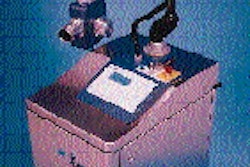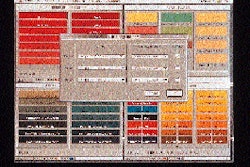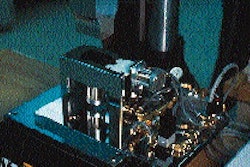
Packagers of a broad array of consumer goods hope that the solution to their "Made in America" problem will be Made in, if not heaven, at least in the Federal Trade Commission (FTC). The FTC is reconsidering its requirement that products labeled "Made in USA" have "all or virtually all" of their components made in America. "This is a huge packaging issue, especially for multinational companies who do a lot of business in North America," says Robin Lanier, vice president of the International Mass Retail Assn. IMRA represents companies such as Kmart and Wal-Mart." Companies such as 3M are totally hysterical," says Lanier. Jim Palmquist, senior attorney for consumer business units at 3M, denies the company is hysterical. But he admits there is "a problem," and potentially an immense one at that. The problem is that Canada requires some products manufactured in the United States with foreign components to be labeled "Made in USA" when they are exported to Canada. But those same products, when sold in the U.S., cannot be labeled "Made in USA" because they do not meet the FTC's "all or virtually all" standard. So 3M-and numerous other companies-have to run one packaging line for Canada, another for its U.S. production. Palmquist says he cannot identify how many of 3M's 50ꯠ individual products may need two different packages. "We haven't calculated," he states, "but enough to be a problem." The FTC standard has also posed a problem for manufacturers of equipment such as packaging machinery. That difficulty explains the development of the Packaging Machinery Manufacturers Institute's (PMMI) "Crafted With Pride in the USA" program. The criterion for PMMI membership, and thus for use of the "Crafted" label, is that the packaging machinery have more than 50% of its value accounted for by components and "intangibles" of U.S. origin, according to Tim O'Rourke, director of technical services at PMMI. Intangibles include such things as machine design. Beth Grossman, the FTC attorney who is in charge of the "Made in the USA" rulemaking, says that even though the PMMI criterion would not meet the FTC "all or virtually all" test, it is perfectly legal as long as the people who purchase packaging machinery realize that a "Crafted" label means only that the machine complies with the PMMI criterion. "Then there is not likely to be deception," she explains. "In any case, we tend to concentrate our enforcement efforts on products that are sold to the public, not to other businesses." The FTC's criterion for "Made" grew out of the FTC's general law against deceptive advertising. The standard first adopted after World War II was "wholly domestic." The FTC's Grossman explains that two recent cases involving New Balance and Hyde running shoes prompted the FTC to "rearticulate" the standard as "all or virtually all." Given the international nature of manufacturing today, the FTC standard is nearly impossible for most U.S. manufacturers to meet. The latest FTC step toward changing the standard took place at a two-day public meeting on March 26 and 27 during which the FTC gathered comments on two proposed alternatives to the "all or virtually all" standard. One would be a percentage-based standard, such as where 50% of the product's value had to be American. Discerning this would probably require a very complicated formula that could be difficult to enforce. Even if something less than mind-numbing, verification could be a new blizzard of paperwork. The other option was the one used by the U.S. Customs Service, "substantial transformation." A product would be considered "made" in the country where its components were substantially transformed into the final product. In written comments, Customs actually suggested a two-tier "transformation" scheme. A product could be labeled "Assembled in USA" or "Made in USA with foreign components" if foreign components were turned into a product made on these shores. But a product would have to be "doubly transformed" to carry a "Made" label. An example of that would be a radio assembled here from printed circuit boards made here but with semiconductors made in Korea, for example. "The value-added option would be expensive, time-consuming and might not get the result the FTC is looking for," says Sandra Gethers, chief of the special classification and marketing branch at Customs. "But we recognize the FTC's mandate is different than our's, and substantial transformation may not satisfy their statutory goals." Chuck Yuska, president of PMMI, says he supports the substantial transformation alternative. c

























